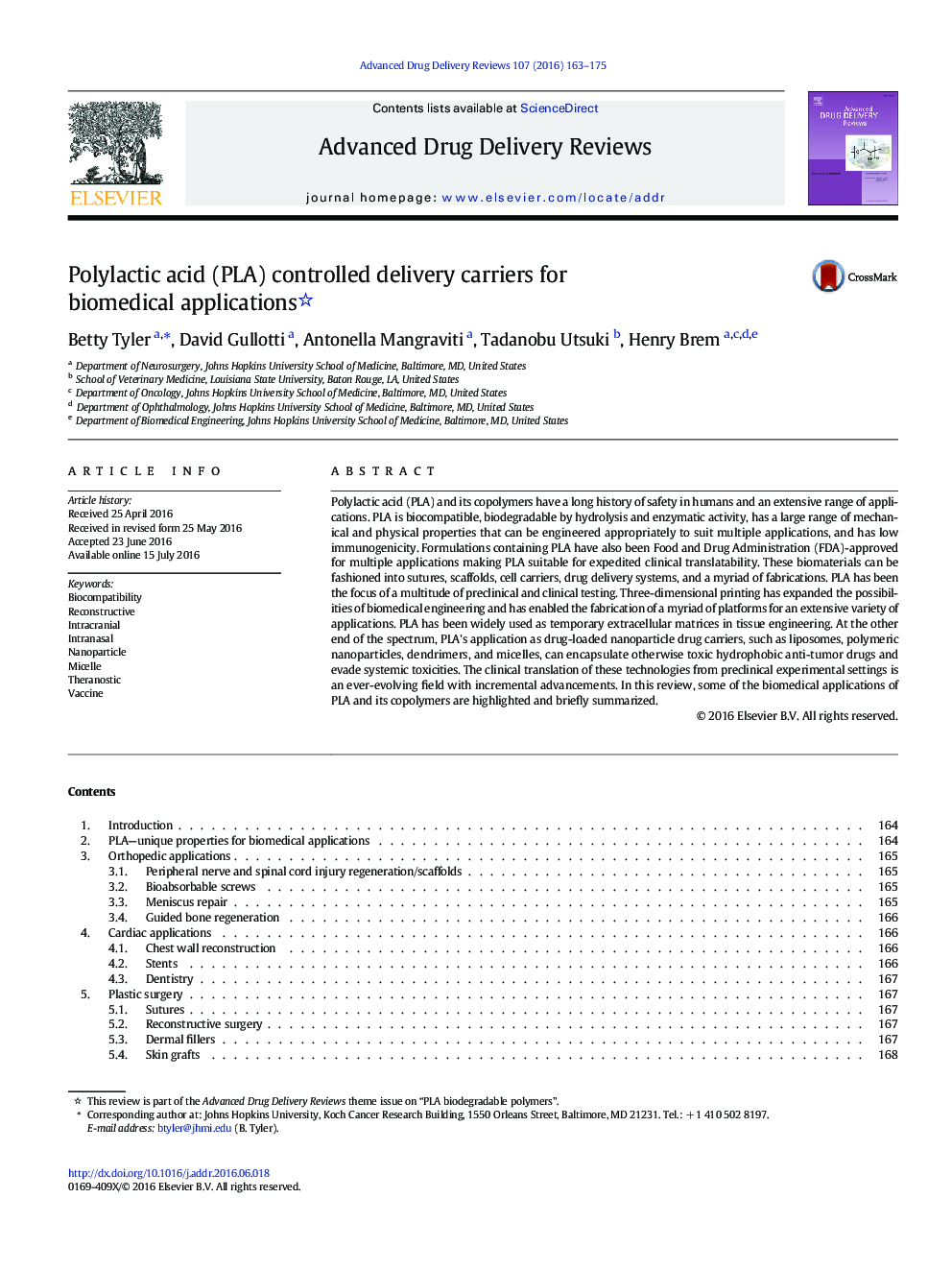| Article ID | Journal | Published Year | Pages | File Type |
|---|---|---|---|---|
| 5520061 | Advanced Drug Delivery Reviews | 2016 | 13 Pages |
Polylactic acid (PLA) and its copolymers have a long history of safety in humans and an extensive range of applications. PLA is biocompatible, biodegradable by hydrolysis and enzymatic activity, has a large range of mechanical and physical properties that can be engineered appropriately to suit multiple applications, and has low immunogenicity. Formulations containing PLA have also been Food and Drug Administration (FDA)-approved for multiple applications making PLA suitable for expedited clinical translatability. These biomaterials can be fashioned into sutures, scaffolds, cell carriers, drug delivery systems, and a myriad of fabrications. PLA has been the focus of a multitude of preclinical and clinical testing. Three-dimensional printing has expanded the possibilities of biomedical engineering and has enabled the fabrication of a myriad of platforms for an extensive variety of applications. PLA has been widely used as temporary extracellular matrices in tissue engineering. At the other end of the spectrum, PLA's application as drug-loaded nanoparticle drug carriers, such as liposomes, polymeric nanoparticles, dendrimers, and micelles, can encapsulate otherwise toxic hydrophobic anti-tumor drugs and evade systemic toxicities. The clinical translation of these technologies from preclinical experimental settings is an ever-evolving field with incremental advancements. In this review, some of the biomedical applications of PLA and its copolymers are highlighted and briefly summarized.
Graphical abstractDownload high-res image (265KB)Download full-size image
